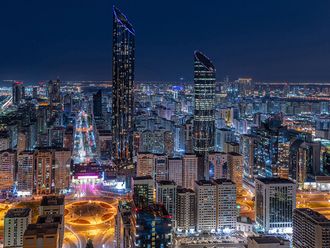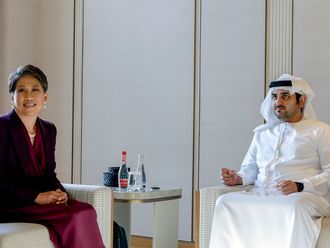While I was at the airport, I could overhear two gentlemen exchanging notes on Dubai’s rental market. Mind you, it was around midnight and after a long-haul flight, ‘Dubai rents’ was a trending topic on their minds.
And why not? Residents in Dubai have shelled out a substantial amount on rents since 2011-12. These have skyrocketed and have never scaled southward since. People have shifted from Tier 1 to Tier 2 locations in Dubai and made several adjustments to keep their personal balance-sheets healthy.
However, the good news is that the rents have cooled down in some parts of Dubai due to the new demand and supply equation.
Supply situation
Today, a plethora of residential units are available across the country. Approximately 20,000 units will be delivered this year; this has overtaken the influx of newcomers into the country.
Over 2,000 villas will be added this year to the existing inventory. These units are expected to cushion Dubai’s rents that have soared since late 2011. Increase in supply will obviously impact the market, particularly plain-vanilla developments. Also the villa segment in particular will see increased competition as more units come into the market until 2017.
Developers have started constructing many projects that were stalled due to the global financial crisis or have launched new projects on the back of the market resurgence. The risk inherent in excess supply is difficult to quantify, however, the number of units developed each year are increasing. The market now needs to be closely monitored to avoid the 2008 situation.
The residential property market therefore faces the prospect of easing up due to the upcoming supply factor and also the recent price correction. Such a scenario is important to avoid high rental led inflation which is critical to maintain a stable and sustainable economic growth.
Cyclical correction
With oil prices being highly volatile, the real estate market in Dubai will most likely undergo a squeeze on prices and rents in the short term. The correction will be more of a normal real estate cyclical downturn of 15 to 20 per cent as opposed to the massive 60 per cent drop during the crisis back in 2009. However, a lot depends on how the economy continues to perform and also on the impact of external macroeconomic factors.
The market is finding its own level now. Some owners who did ask for higher rents are being advised to drop them to reduce the periods where the properties may be empty.
Rental rates have mostly corrected across all areas, however, it is less noticeable within luxury properties. Luxury properties are still in demand and people who can afford are still willing to pay that extra to move in to a posh locality with all the facilities.
Renewed focus on new growth corridors
With Dubai witnessing scarcity in prime areas to develop more property projects, the focus is now shifting to new growth corridors such as Dubailand, Meydan and Jebel Ali. Peripheral areas or rather secondary areas such as Sports City are in the focus for projects aimed at the mid — to low income households.
Therefore, we expect rentals in non-luxury to reduce further, particularly in areas such as Jumeirah Village and Dubai Sports City.
Much of the city’s planning depends on the number of residents, which is expected to grow to 3.4 million by 2020, a 7 per cent increase from the current 2.3 million. When estimating supply and demand, we need to take into consideration the nature of the market resurgence, the performance of tourism and trade sectors, investment in infrastructure and stakeholders’ commitment to maintain sustainable growth.
Dubai’s economy is expected to grow at an estimated 3.5-4 per cent for the next few years. There are events such as the Expo that are expected to generate thousands of jobs during this period; the demand for housing and commercial facilities therefore is expected to grow significantly. Inventory levels may spike in the interim — however, they will not be excessive from a long term perspective.
A basic stability in demand and supply is what Dubai requires, and this will surely foster equilibrium in the market. Hence increasing supply will help in the growth of the Dubai economy. This will also help the mid-income segment to have a favourable rental proposition.
— The writer is the Country Manager — UAE at Chestertons MENA.












